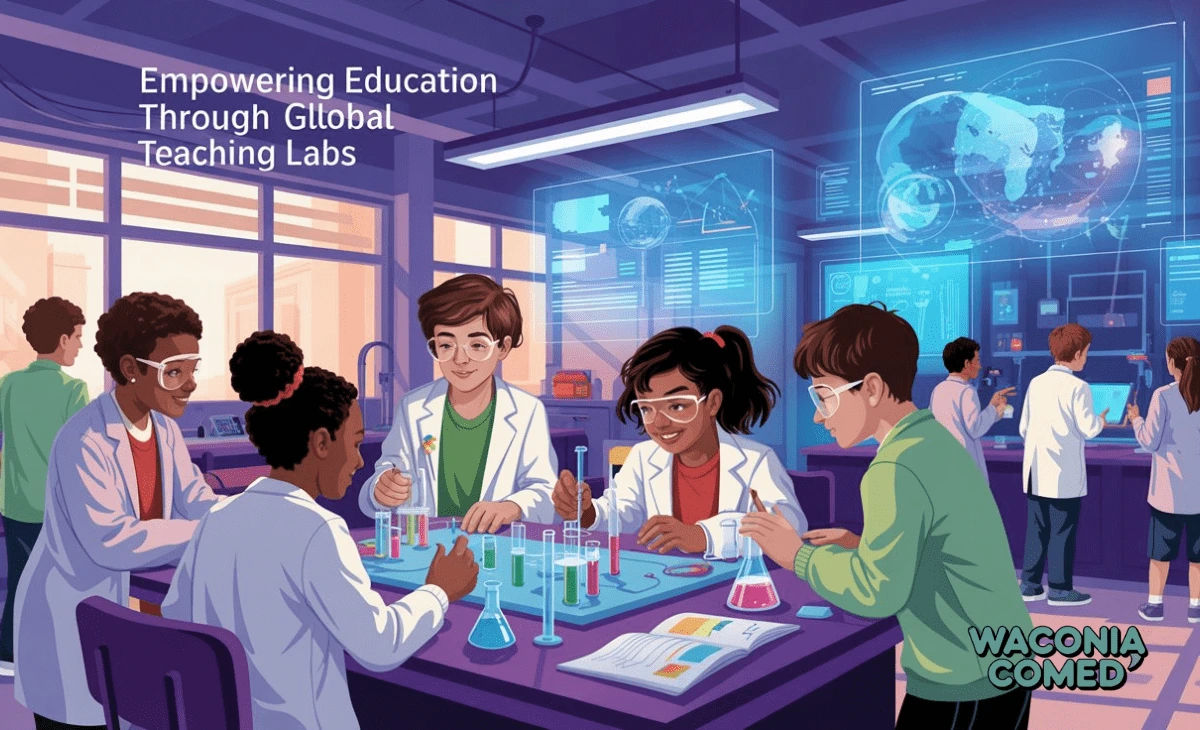Education in today’s interconnected world transcends local classrooms. Educators and students alike are increasingly seeking global experiences that foster cross-cultural understanding and real-world problem-solving. One of the most impactful ways this is being achieved is through Global Teaching Labs, an international teaching initiative designed to bring innovative, hands-on learning to students across the world.
These labs serve as immersive platforms where university students, often from top institutions, travel to partner schools globally and collaborate with local teachers to deliver engaging, project-based lessons in science, technology, engineering, and mathematics (STEM).
This article explores what Global Teaching Labs are, their key benefits and challenges, and how they are transforming education worldwide.
What Are Global Teaching Labs?
Global Teaching Labs (GTL) are international education programs, typically initiated by top universities like MIT, where students volunteer to teach STEM subjects in foreign classrooms during short-term teaching residencies. These programs aim to:
- Enhance local education systems through active learning methods
- Provide real-world teaching experience to university students
- Foster cross-cultural collaboration and understanding
GTL participants are not just visitors; they become part of the educational ecosystem, co-teaching with local educators and adapting content to suit cultural and curricular needs.
Why Global Teaching Labs Matter
The intent behind searching for “global teaching labs” usually reflects an interest in innovative teaching models, international education opportunities, or ways to enhance STEM education globally. These labs are vital for several reasons:
- They fill gaps in under-resourced education systems with fresh teaching perspectives.
- Students benefit from interactive, inquiry-driven learning instead of rote memorization.
- Educators gain exposure to globally recognized teaching methodologies.
The model aligns perfectly with 21st-century learning goals: collaborative problem-solving, global awareness, and STEM fluency.
Benefits of Global Teaching Labs
For Host Schools
- Enhanced STEM Engagement: Local students are introduced to high-level, engaging STEM experiments and problem-solving tasks.
- Professional Development: Local teachers benefit from co-teaching and mentoring with trained facilitators.
- Global Exposure: Students gain cultural awareness and international perspectives.
For visiting instructors.
- Hands-On Teaching Experience: Students from universities gain real-world classroom experience in diverse educational settings.
- Personal Growth: Participants develop cross-cultural communication skills, adaptability, and leadership.
- Academic and Career Boost: Many participants use this experience to launch careers in education, development, or global policy.
Real-World Examples of Global Teaching Labs
Several institutions have pioneered impactful GTL programs.
- MIT Global Teaching Labs: MIT students travel to countries like Italy, Germany, and Mexico to co-teach STEM subjects using experimental and inquiry-based methods.
- Cambridge’s International Teaching Fellows: Participants engage with school systems in Southeast Asia and Africa, providing both classroom support and curriculum development.
- Harvard’s Education Abroad Program: Focuses on education policy, teaching, and cultural immersion in countries with diverse socio-economic backgrounds.
These examples demonstrate how GTLs are adaptable and scalable across regions with varying educational challenges.
How Global Teaching Labs Work: A Step-by-Step Guide
- Selection & Training: University students apply and undergo training in pedagogy, cultural sensitivity, and curriculum adaptation.
- School Partnership: Host schools are identified based on curriculum needs, infrastructure, and willingness to collaborate.
- Curriculum Planning: Visiting instructors design customized lesson plans tailored to local student levels and interests.
- Implementation: Over 2–6 weeks, participants co-teach, lead labs, and mentor students.
- Feedback & Assessment: Teachers, students, and participants evaluate the experience to measure impact and improve future sessions.
This structured approach ensures quality teaching delivery while maintaining flexibility to adjust for cultural and classroom dynamics.
Challenges Faced by Global Teaching Labs
Despite their impact, GTLs are not without hurdles:
- Language Barriers: Communication can be a challenge, requiring translation or bilingual support.
- Curriculum Alignment: Balancing visiting instructors’ content with local standards takes planning.
- Short Duration: A few weeks may not be enough to create long-term change unless paired with ongoing teacher development.
- Resource Gaps: Some schools lack basic infrastructure to support interactive learning.
Solutions include pre-program collaboration, digital follow-ups, and long-term institutional partnerships to sustain benefits beyond the teaching window.
Tools and Tips for Successful Global Teaching Labs
- Lesson Planning Tools: Apps like Google Classroom, Canva for Education, and PhET Interactive Simulations make STEM teaching easier.
- Translation & Language Apps: Duolingo, DeepL, and Google Translate bridge language gaps.
- Cultural Prep: Reading local literature or watching regional documentaries before travel helps participants better connect with students.
These resources enable teaching teams to stay agile, relevant, and engaging in any setting.
FAQs
What is the goal of Global Teaching Labs?
The goal of Global Teaching Labs is to enhance global education by connecting university students with classrooms around the world for STEM teaching and cultural exchange.
Who can participate in these programs?
University students who typically come from science or engineering backgrounds and possess strong communication and teaching skills can participate.
Do host schools need to pay?
Most programs are grant-funded or supported by institutional partners, reducing or eliminating costs for host schools.
How long do these teaching labs last?
Programs usually last between 2 and 6 weeks, depending on the country and partnership.
What subjects are taught in GTLs?
Primarily STEM subjects: science, math, engineering, and computer science, but some also include entrepreneurship and communication skills.
Conclusion: Transforming Education One Lab at a Time
Global Teaching Labs are more than international trips; they are catalysts for educational innovation and global collaboration. They empower students, uplift schools, and encourage a more profound understanding of global citizenship.
For universities and educators looking to make a real impact, GTLs provide a powerful, scalable solution.
Ready to join or host a Global Teaching Lab?
Start by exploring programs at leading institutions or consider proposing your own pilot with local partners. The future of education is hands-on, global, and collaborative, and Global Teaching Labs are leading the way.

